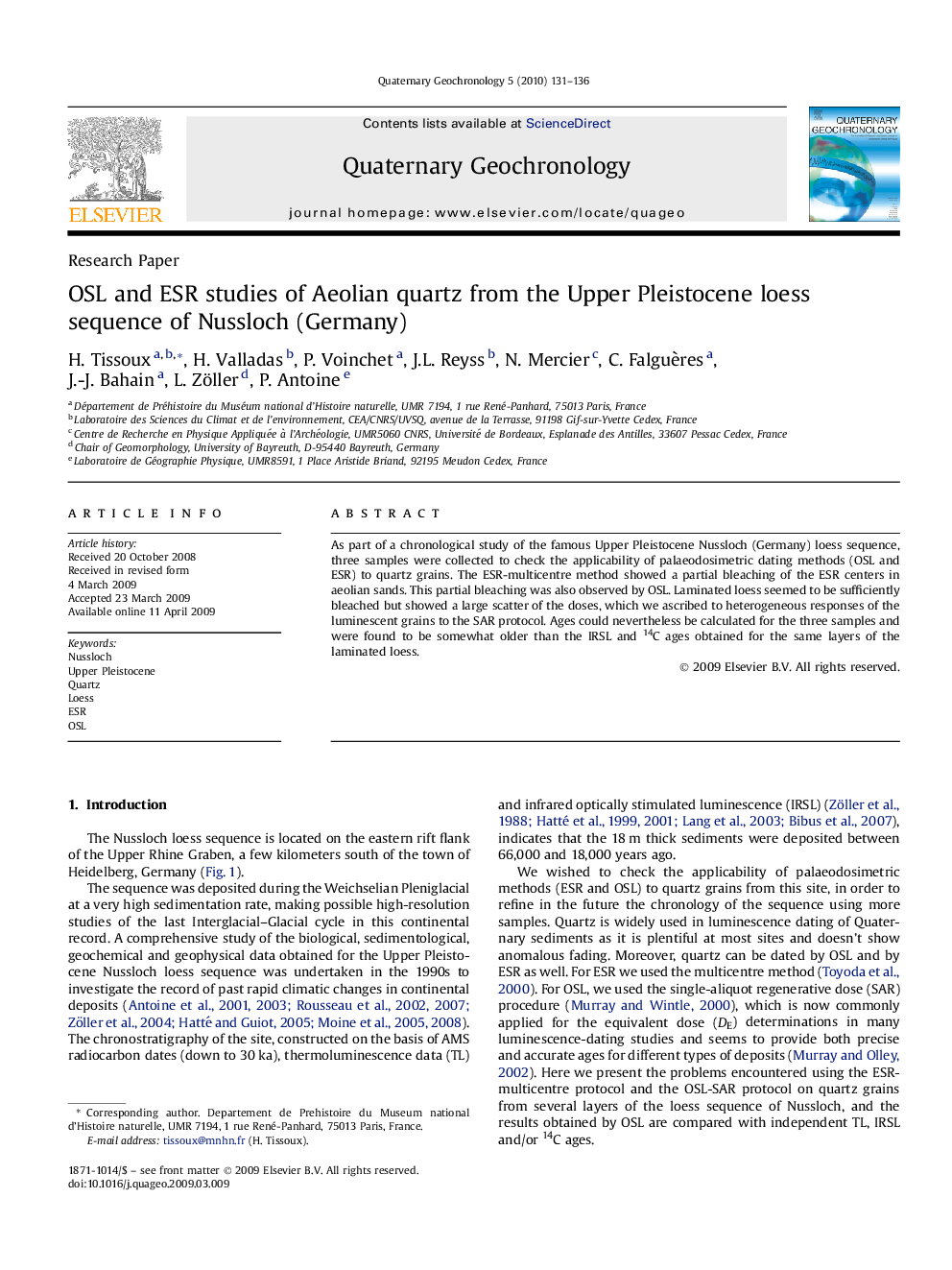| Article ID | Journal | Published Year | Pages | File Type |
|---|---|---|---|---|
| 4725501 | Quaternary Geochronology | 2010 | 6 Pages |
Abstract
As part of a chronological study of the famous Upper Pleistocene Nussloch (Germany) loess sequence, three samples were collected to check the applicability of palaeodosimetric dating methods (OSL and ESR) to quartz grains. The ESR-multicentre method showed a partial bleaching of the ESR centers in aeolian sands. This partial bleaching was also observed by OSL. Laminated loess seemed to be sufficiently bleached but showed a large scatter of the doses, which we ascribed to heterogeneous responses of the luminescent grains to the SAR protocol. Ages could nevertheless be calculated for the three samples and were found to be somewhat older than the IRSL and 14C ages obtained for the same layers of the laminated loess.
Keywords
Related Topics
Physical Sciences and Engineering
Earth and Planetary Sciences
Geochemistry and Petrology
Authors
H. Tissoux, H. Valladas, P. Voinchet, J.L. Reyss, N. Mercier, C. Falguères, J.-J. Bahain, L. Zöller, P. Antoine,
